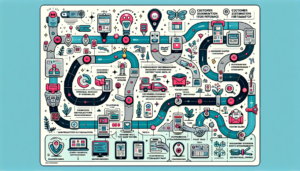In the age of rapid technological advancement, the concept of digital transformation has emerged as a crucial factor for businesses aiming to maintain competitiveness and drive growth. Central to this transformation is automation, which offers myriad benefits including enhanced agility, operational efficiency, and strategic advancements. This article explores how integrating automation tools like Zapier and HubSpot catalyses digital transformation efforts, featuring real-world examples to illustrate these gains.
The Role of Automation in Digital Transformation
Digital transformation encompasses a broad range of initiatives aimed at leveraging digital technologies to fundamentally change how businesses operate and deliver value to customers. Automation is a pivotal component of this transformation, streamlining processes, reducing human error, and allowing organisations to focus on more strategic tasks. In addition, automation facilitates a more agile business environment, enabling companies to adapt quickly to changing market demands.
Zapier and HubSpot: Catalysts for Change
Zapier and HubSpot are two prominent automation tools that are accelerating digital transformation across various industries. Zapier allows businesses to streamline workflows by connecting different apps and automating tasks without requiring any coding skills. This enables companies to automate routine, repetitive tasks, thereby freeing up valuable time and resources.
On the other hand, HubSpot offers a comprehensive platform that combines marketing, sales, and customer service functions, enhanced with automation capabilities. Its robust CRM system facilitates seamless data management, lead nurturing, and customer engagement, underpinning transformative digital initiatives.

Increased Agility through Automation
Automation tools are significant enablers of agility within businesses. They provide the capacity to respond swiftly to customer needs and market changes without incurring additional labour costs. For instance, by using Zapier, a company could automatically trigger customer notifications or update CRM entries upon receiving a new enquiry through their website. This immediate response ability enhances customer satisfaction and reinforces brand loyalty.
A compelling example of increased agility through automation is evident in the e-commerce industry. Companies have leveraged Zapier to integrate their online stores with inventory management systems, ensuring stock levels are updated in real-time without manual input. This not only mitigates the risk of overselling but also ensures a swift adaptation to sales trends and customer demand.
Operational Efficiency Gains
The integration of automation tools like HubSpot also leads to significant improvements in operational efficiency. Automating data entry, report generation, and customer follow-ups reduces time-consuming manual processes, allowing employees to focus on more strategic activities that require human insight and creativity.
For example, a digital marketing agency utilising HubSpot’s automation features can streamline their lead management and reporting processes. By automatically sorting leads based on their engagement level or campaign interaction, they can prioritise high-quality leads and tailor their marketing efforts accordingly. This segmentation and targeted approach result in more efficient use of resources and a higher return on investment.
Strategic Benefits of Automation
Beyond operational enhancements, automation also offers strategic benefits. By fostering a culture of data-driven decision-making, automation provides organisations with valuable insights that support long-term business strategy. Automated data collection and analysis enable businesses to gain a comprehensive view of customer behaviour, market trends, and organisational performance.
Consider a financial services company using HubSpot to automate its customer relationship management. By analysing automated, real-time data on customer interactions and preferences, the company can tailor its services to meet specific client needs, thus enhancing customer satisfaction and retention rates. Such insights are invaluable in refining business strategies and developing customer-centric initiatives that drive competitive advantage.
Real-World Success Stories
Several businesses have reaped significant benefits from implementing automation as part of their digital transformation efforts. A notable example is the telecommunications giant Telefónica. They utilised automation tools to streamline their customer service operations, resulting in a reduction in call waiting times and improved customer service ratings.
Similarly, the global shipping company DHL integrated automation into their supply chain processes. By automating inventory tracking and shipment scheduling, DHL has increased its operational efficiency and reduced overhead costs, highlighting the strategic advantage automation provides in complex logistical environments.
Embrace Automation for Transformative Success
The benefits of integrating automation tools such as Zapier and HubSpot into digital transformation strategies are undeniable. From increased agility and enhanced operational efficiency to strategic insights that bolster organisational growth, automation is an indispensable ally for modern businesses.
As industries continue to evolve in response to digital advancements, companies must consider how automation can support their transformation journey. By doing so, they not only streamline operations but also position themselves to better address future challenges.
Take a step towards transformative success by exploring how Pineo can help your business harness the power of automation. Our expertise in digital transformation and strategic integration of automation tools is tailored to meet your unique operational needs and drive sustained growth.





